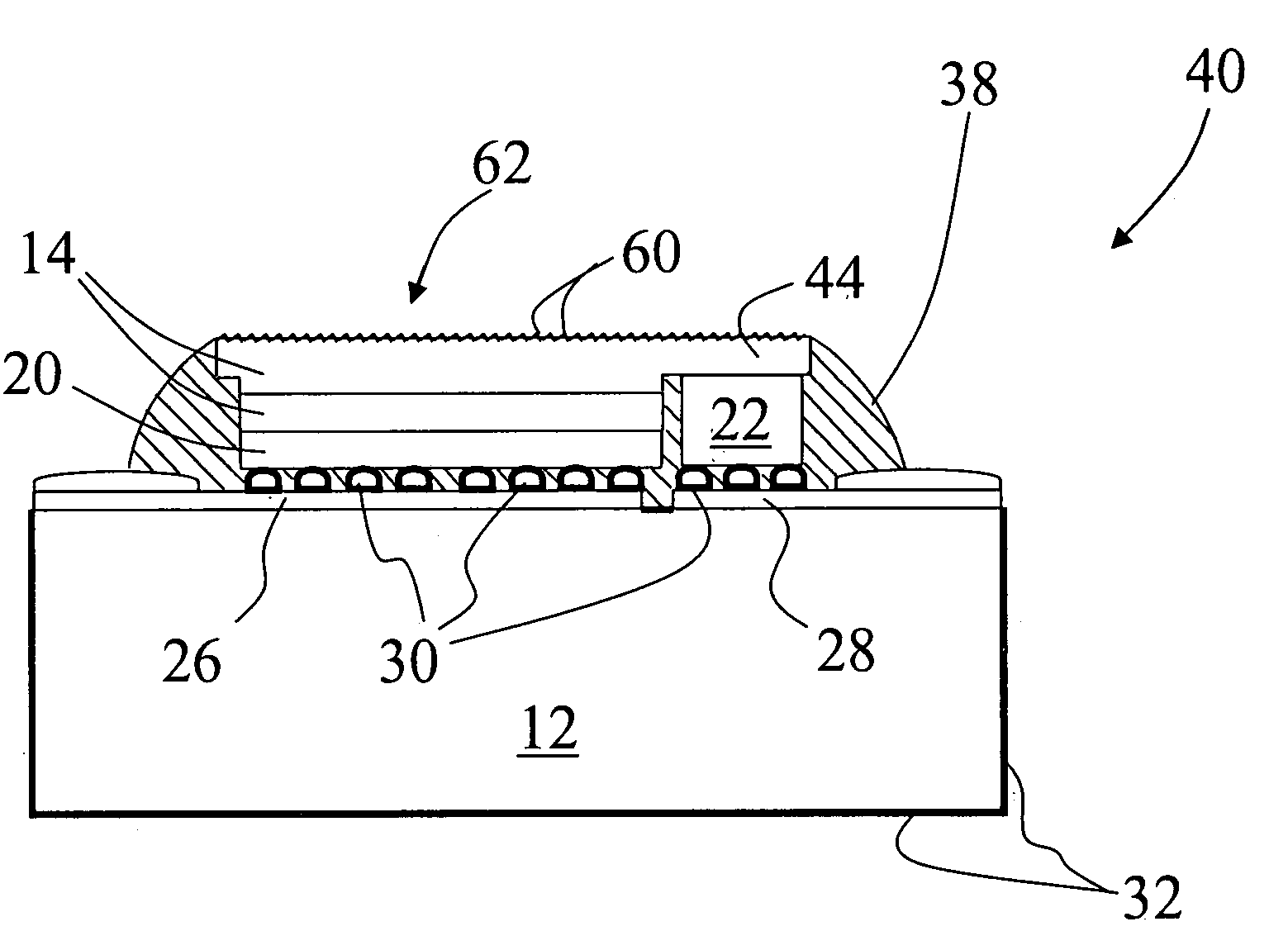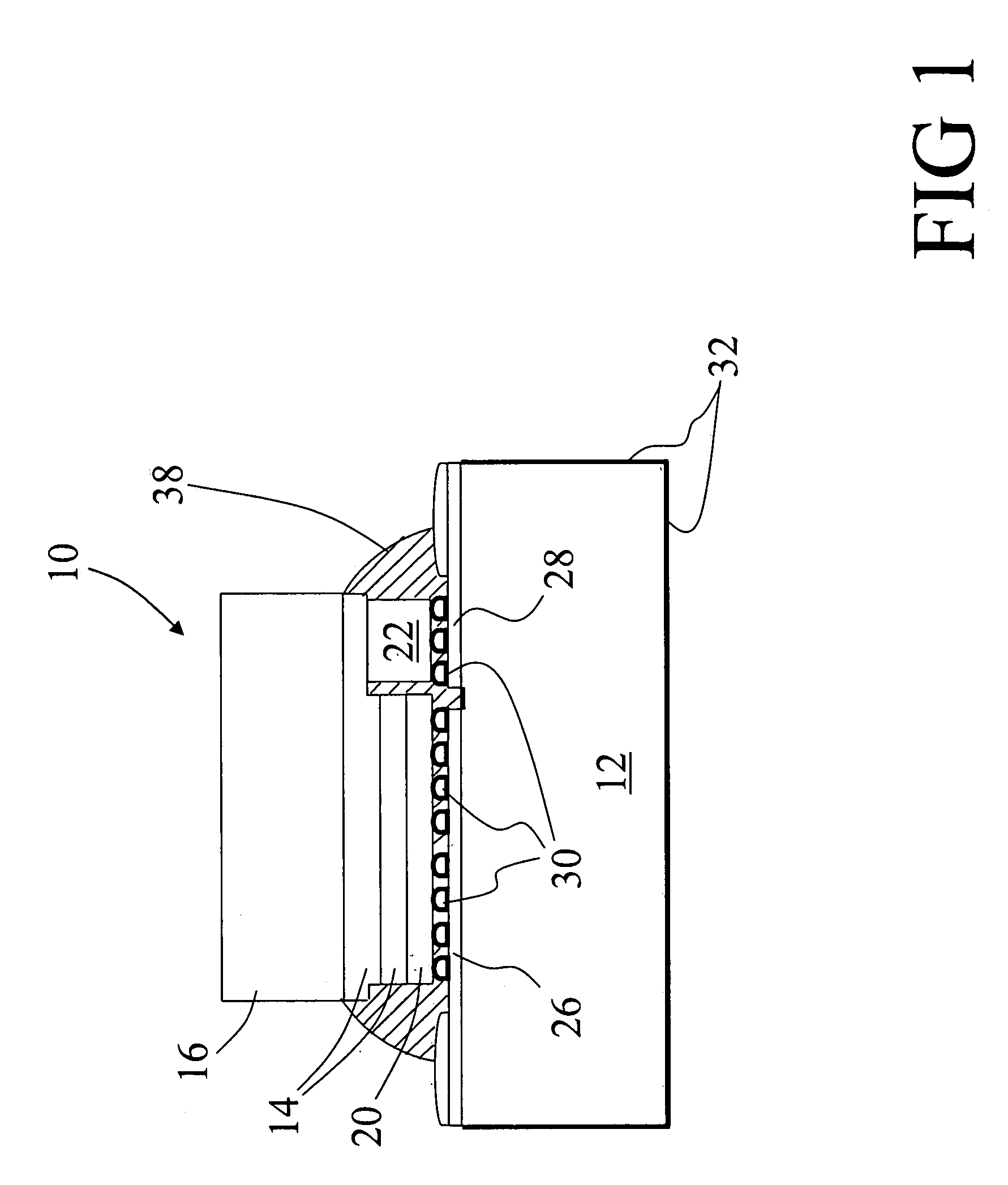Increased light extraction from a nitride LED
a technology of led chips and nitride, which is applied in the field of electronic arts, can solve the problems of high cost, significant degradation of the light output power of the led chip, and optical reflective loss at the interface between the substrate and the epitaxial layer,
- Summary
- Abstract
- Description
- Claims
- Application Information
AI Technical Summary
Benefits of technology
Problems solved by technology
Method used
Image
Examples
Embodiment Construction
[0015]With reference to FIG. 1, a light emitting die 10 is mounted in flip-chip fashion on a mount or submount wafer 12. The die 10 includes a semiconductor device layers stack 14 that is epitaxially deposited on a growth substrate 16. The epitaxial device layers stack 14 can comprise a group III nitride ultraviolet or blue light material, a group III phosphide visible-emission material, or the like.
[0016]The semiconductor layers stack 14 is depicted with two exemplary layers corresponding to a simple p / n diode; however, those skilled in the art will appreciate that more complex semiconductor layer stack can be employed. For a group III nitride ultraviolet or blue light emitting diode with a p-on-n orientation, the layers stack typically includes an epitaxial growth buffer of aluminum nitride or another material, an n-type gallium nitride base layer, an active region of indium gallium nitride, a p-type gallium nitride layer, and optionally a contact layer formed on the p-type galliu...
PUM
 Login to View More
Login to View More Abstract
Description
Claims
Application Information
 Login to View More
Login to View More - R&D
- Intellectual Property
- Life Sciences
- Materials
- Tech Scout
- Unparalleled Data Quality
- Higher Quality Content
- 60% Fewer Hallucinations
Browse by: Latest US Patents, China's latest patents, Technical Efficacy Thesaurus, Application Domain, Technology Topic, Popular Technical Reports.
© 2025 PatSnap. All rights reserved.Legal|Privacy policy|Modern Slavery Act Transparency Statement|Sitemap|About US| Contact US: help@patsnap.com



